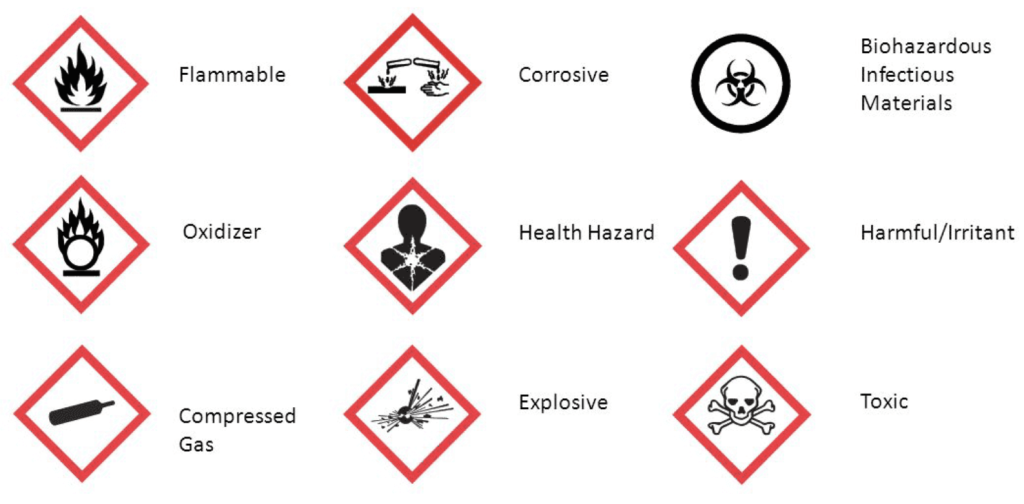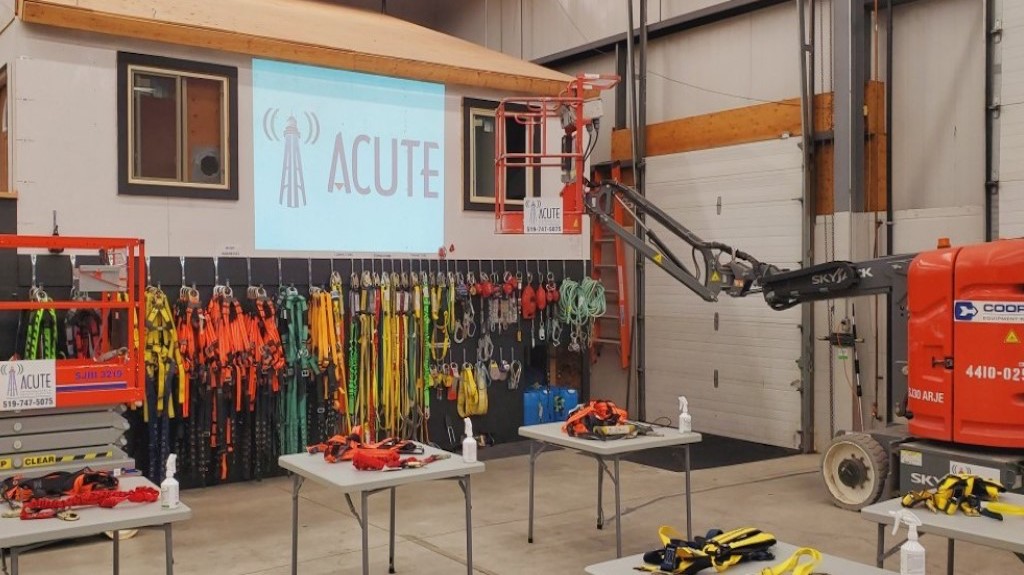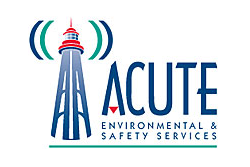Safety training isn’t just a box to check; it’s a crucial investment in your employees’ well-being and your company’s success. That’s why the Board Of Canadian Registered Safety Professionals exists – to set certification standards for the occupational health and safety profession. The article will explain why safety training is necessary, the jobs that require it and how to find and prepare the courses needed. You can skip ahead to another section by clicking on the titles below.
ACUTE delivers practical, hands-on health and safety solutions. With over 200 years of combined experience, our team goes beyond theory to provide real-world solutions tailored to your specific needs. We understand the specifications of the Canadian Registered Safety Professionals and have the experience to help your team. Contact us today.

1. Why Safety Training Is Important
Safety training is an essential component of any workplace. It empowers employees with the knowledge and skills to identify and mitigate hazards, preventing accidents and injuries. Here are some key points:
Prevents Accidents and Injuries: Proper training equips workers with the knowledge and skills to identify hazards, work safely, and minimize injuries.
Compliance with Regulations: Many jobs in Ontario require specific safety training by law. Failing to comply can lead to hefty fines and even legal repercussions.
Reduced Costs: Accidents cost businesses dearly in terms of lost work time, compensation claims, and property damage. Investing in safety training helps reduce these expenses.
Improved Productivity: A safe work environment fosters higher morale and engagement, leading to better productivity.
It’s Legal: In Ontario, most workplaces are legally obligated to provide these four essential types of training to their employees:
A. Accessibility for Ontarians with Disabilities Act (AODA):
Ontario’s Accessibility for Ontarians with Disabilities Act (AODA) mandates accessibility standards for all sectors, including government, private businesses, and non-profits. The goal is to create a fully accessible province by 2025.
B. Workplace Hazardous Materials Information System (WHMIS):
WHMIS is a comprehensive system designed to protect workers from the hazards associated with hazardous materials. It provides information about the potential dangers of these substances through labels, Safety Data Sheets (SDS), and worker training.
Key components of WHMIS:
- Labels: Labels on containers clearly identify hazardous materials and their associated risks.
- Safety Data Sheets (SDS): Detailed information about the properties, hazards, and safe handling of hazardous materials.
- Worker Training: Education and training programs to ensure workers understand the hazards and know how to work safely with hazardous materials.
By prioritizing WHMIS safety training, businesses can create a safer working environment, boost employee morale, and protect their bottom line.

WHMIS is designed to protect workers from the dangers associated with hazardous materials.
C. Worker/Supervisor Health and Safety Awareness
Worker Health and Safety Awareness training in Ontario is a crucial requirement for all workers under the Occupational Health and Safety Act (OHSA). This training program is designed to educate workers about their rights, responsibilities, and the importance of workplace safety.
Key topics covered in this training include:
- Understanding the OHSA and its regulations
- Recognizing workplace hazards and risks
- Reporting hazards and near-miss incidents
- Participating in health and safety committees
- Knowing your rights and responsibilities as a worker
By completing this training, workers gain a better understanding of how to protect themselves and their colleagues from workplace injuries and illnesses.
D. Workplace Violence and Harassment
Workplace violence and harassment are serious issues that can have devastating consequences. To address these concerns, Ontario legislation requires employers to implement policies and programs to prevent and respond to incidents of violence and harassment.
Key components of Workplace Violence and Harassment training in Ontario include:
- Understanding the legal framework: Learning about the relevant legislation, including the Occupational Health and Safety Act (OHSA) and the Workplace Violence and Harassment Prevention Act.
- Recognizing signs of violence and harassment: Identifying verbal, physical, and psychological cues that may indicate potential violence or harassment.
- Developing prevention strategies: Implementing measures to prevent violence and harassment, such as workplace policies, training programs, and conflict resolution procedures.
- Responding to incidents: Knowing how to respond to incidents of violence and harassment, including reporting procedures and crisis management.
- Promoting a positive work environment: Fostering a culture of respect, dignity, and inclusivity.
By providing regular workplace violence and harassment training, employers can create a safer and more positive work environment for all employees.

It’s imperative to find a trainer recognized by the Board Of Canadian Registered Safety Professionals.
2. How to Find Good Training in Ontario
Choosing the right safety training provider accredited by the Board Of Canadian Registered Safety Professionals is crucial for ensuring the safety and compliance of your workplace. Here we’ll share valuable tips on how to find the best safety training provider in Ontario.
A. Check the Ministry of Labour’s Approved Training Provider List:
- The Ministry of Labour maintains a list of approved training providers. This ensures that the training you receive meets the required standards.
- You can find this list on the Ontario.ca website.
B. Look for Canadian Registered Safety Professionals (CRSPs):
- CRSPs are certified professionals who have demonstrated expertise in health and safety.
- Look for training providers that employ CRSPs as instructors, as they can offer valuable insights and practical advice.
C. Consider the Provider’s Reputation and Experience:
- Research the training provider’s reputation and experience.
- Look for positive reviews, testimonials, and case studies.
- Ask about the trainer’s qualifications and experience in delivering safety training.
D. Evaluate the Training Program’s Content:
- Ensure the training program covers all relevant topics and meets the specific needs of your industry.
- The program should be engaging, informative, and practical.
E. Assess the Training Delivery Method:
- Consider whether in-person, online, or blended learning formats are best suited for your organization’s needs and employee preferences.
- Ensure the training provider offers flexible and convenient options.
F. Inquire About Post-Training Support:
- A good training provider should offer ongoing support, such as answering questions, providing additional resources, or conducting follow-up training.
By following these tips, you can find a reputable safety training provider recognized by the Board Of Canadian Registered Safety Professionals to help you keep your workplace safe and compliant.

It is important to arrive prepared for your training session.
3. How To Prepare For Training
To maximize your learning experience and ensure you get the most out of your safety training, here are some tips:
- Inquire About Items Needed: Make sure you have or obtain what will be required such as steel-toed boots and other PPE.
- Review Pre-Training Materials: If provided, review any pre-reading materials or online modules before the training session. This will give you a solid foundation of knowledge.
- Identify Your Learning Style: Understand whether you’re a visual, auditory, or kinesthetic learner. This will help you tailor your learning approach during the training.
- Set Clear Goals: Determine what you hope to achieve from the training. This will help you focus your attention and ask relevant questions.
- Prepare Questions: Write down any questions you have beforehand. This will help you stay focused and ensure you get the information you need.
- Be an Active Participant: Engage with the trainer and other participants. Ask questions, share your experiences, and participate in group discussions.
- Take Notes: Jot down key points and action items. Refer to your notes after the training to reinforce your learning.
- Practice What You Learn: Apply the knowledge and skills gained from the training to your daily work.
By prioritizing safety training and choosing a reputable training provider, you can create a safer workplace, reduce accidents, and protect your most valuable asset: your employees.

ACUTE: Your Trusted Partner in Safety Training
At ACUTE, our team of experienced safety professionals is dedicated to providing top-quality, CPO-approved training. We understand the importance of ensuring your workforce is equipped with the knowledge and skills to work safely.
Why Choose ACUTE?
- CPO-Approved Training: Our programs are certified by the Chief Prevention Officer, guaranteeing they meet the highest industry standards.
- Expert Instructors: Our trainers are highly qualified and experienced in delivering engaging and informative training sessions.
- Tailored Solutions: We offer customized training programs to meet your specific needs and industry requirements.
- Proven Track Record: With years of experience, we have a proven track record of delivering effective safety training solutions.
By choosing ACUTE, you’re investing in the safety and well-being of your employees and your business. Contact us today to get started!
What Our Customers Are Saying
Outstanding service provided by Acute, right from the customer support end, right through to the delivery of the session. Always professional, quick to respond, and always delivering services that exceed my expectations. Acute has an amazing team that is always helping us achieve better health and safety performance. So are grateful to have such a tremendous resource in Acute!

